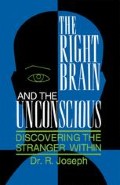Abstract
When a child first learns his or her name he or she also acquires the ability to think and to conceptualize himself or herself in symbolic terms, as an abstract entity. By use of this linguistic symbol both the child and others are able to refer to and to think about him or her. Indeed, as the name is repeatedly applied, the child begins to conceptualize that he or she and this name are one and the same, much as the word mommy and the child’s mother are one and the same, at least in the abstract.
Access this chapter
Tax calculation will be finalised at checkout
Purchases are for personal use only
Preview
Unable to display preview. Download preview PDF.
References
R. F. Schmidt, Fundamentals of Neurophysiology (New York: Springer-Verlag, 1978); J. R. Cooper, F. E. Bloom, and R. H. Roth, The Biochemical Basis of Neuropharmacology (New York: Oxford University Press, 1974 ); G. Lynch, Synapses, Circuits, and the Beginnings of Memory ( Cambridge: MIT Press, 1986 ).
R. Joseph, Neuropsychology, Neuropsychiatry, and Behavioral Neurology (New York: Plenum Press, 1990); R. Joseph. Joseph, Neuropsychology, Neuropsychiatry, and Behavioral Neurology (New York: Plenum Press, 1990); R. Joseph, The Right Cerebral Hemisphere: Emotion, Music, Visual-Spatial Skills, Body Image, Dreams and Awareness, ” Journal of Clinical Psychology 44 (1988), 630–673.
Joseph, 1990.
H. Hecaen and M. L. Albert, Human Neuropsychology ( New York: Wiley, 1978 ).
D. F. Kripke and D. Sonnenschein, “A 90 Minute Daydream Cycle,” Sleep Research 2 (1973), 187–188.
W. D. Foulkes, “Dream Reports from Different Stages of Sleep,” Journal of Abnormal and Social Psychology 65 (1962), 14–25.
B. Monroe, A. Rechtschaffen, D. Foulkes, and J. Jensen, “Discriminability of REM and NREM Reports,” Personality and Social Psychology 2 (1965), 456–460.
Foulkes, 1962.
D. R. Goodenough, A. Shapiro, M. Holden, and R. Steinschriber, “Comparison of ‘Dreamers’ and ’Non-Dreamers,’” Journal of Nervous and Mental Disease 59 (1959), 295–302.
Monroe et ah 1965.
J. Kamiya, “Behavioral, Subjective and Physiological Aspects of Drowsiness and Sleep.” In Function of Varied Experience, D. W. Fiske and S. R. Maddi, Eds. (pp. 145–174 ) ( Homewood, IL: Dorsey, 1961 ).
L. Goldstein, N. W. Stolzfus, and J. F. Gardocki, “Changes in Inter-hemispheric Amplitude Relationships in the EEG during Sleep,” Physiology and Behavior 8 (1972), 811–815.
D. Hodoba, “Paradoxic Sleep Facilitation by Interictal Epileptic Activity of Right Temporal Origin,” Biological Psychiatry 21 (1986), 1267–1278.
J. S. Meyer, “Cerebral Blood Flow in Normal and Abnormal Sleep and Dreaming,” Brain and Cognition 6 (1987), 266–294.
Joseph, 1988, 1990.
M. Bertini, C. Violani, P. Zoccolotti, A. Antonelli, and L. DiStephano, “Performance on a Unilateral Tactile Test during Waking and upon Awakenings from REM and NREM.” In Sleep, P. Koella, Ed. (pp. 122–155 ) ( Basel: Karger, 1983 ).
R. Broughton, “Human Consciousness and Sleep/Waking Rhythms: A Review and Some Neuropsychological Considerations,” Journal of Clinical Neuropsychology 4 (1982), 193–218.
J. P. Banquet, “Inter-and Intrahemispheric Relationships of the EGG Activity during Sleep in Man,” Electroencephalography and Clinical Neurophysiology 55 (1983), 51–59.
Kripke and Sonnenschein, 1973.
R. Klein and R. Armitage, “Rhythms in Human Performance: IV2 Hour Oscillations in Cognitive Style,” Science 204 (1979), 1326–1328.
Bertini et al 1983.
Hodoba, 1986.
Joseph, 1988, 1990.
R. D. Cartwright, L. W. Tipton, and J. Wicklund, “Focusing on Dreams,” Archives of General Psychiatry 37 (1980), 275–288.
Rights and permissions
Copyright information
© 1992 R. Joseph
About this chapter
Cite this chapter
Joseph, R. (1992). Repetition and Rejection. In: The Right Brain and the Unconscious. Springer, Boston, MA. https://doi.org/10.1007/978-1-4899-5996-6_13
Download citation
DOI: https://doi.org/10.1007/978-1-4899-5996-6_13
Publisher Name: Springer, Boston, MA
Print ISBN: 978-0-306-44330-5
Online ISBN: 978-1-4899-5996-6
eBook Packages: Springer Book Archive

